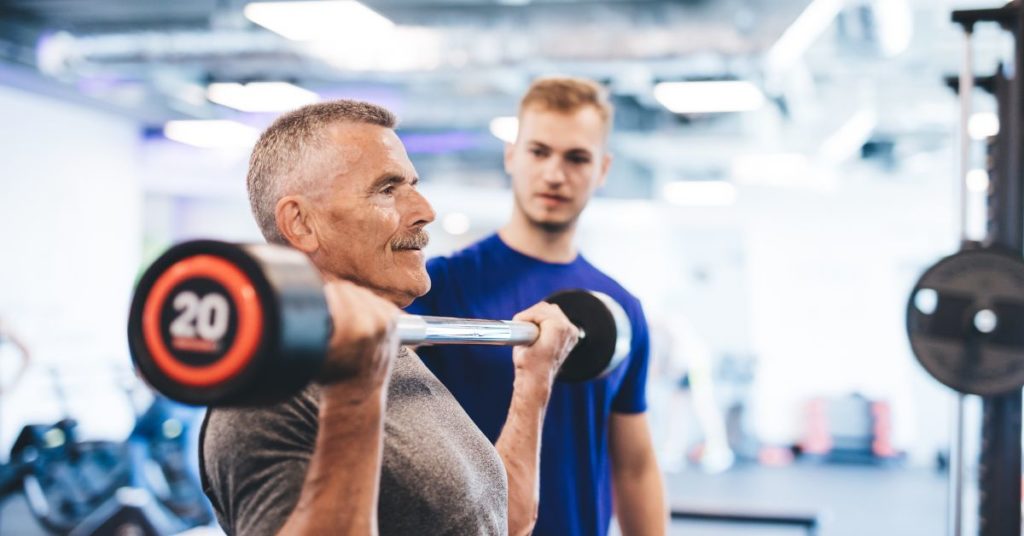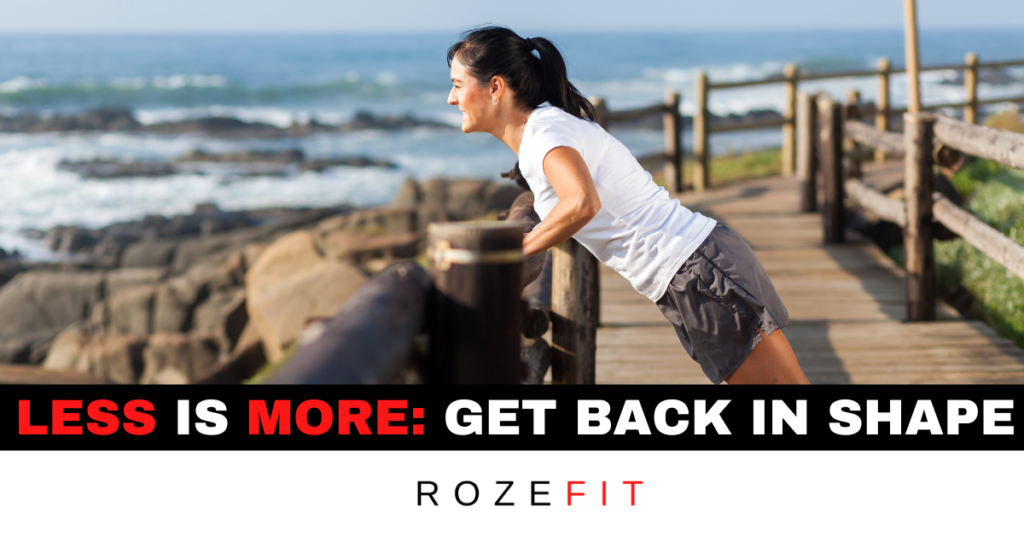We live in an unfortunate paradigm whereby fitness culture is defined by grueling class workouts filled with endless kettlebell deadlifts and a sore lower back for your post-workout treat.
The music is loud, you are sweaty, and everyone seems to be into it.
At least, that’s what we are told.
But it’s no wonder people dread their workouts.
They have been fed this idea that they need to be working out at a super high intensity to really make progress.
This couldn’t be further from the truth.
Less Is More: A Tailored Approach

I have spent that last decade working one-on-one with individuals that are noticing age-related changes to their body composition, metabolic health, and physical abilities.
They come to me because they just don’t have the same stamina that they did when they were in their 20’s.
They almost always carry extra body fat around their waist, and most of them have been told by their doctor that they have high blood sugar, high blood pressure, high cholesterol, or a combination of all three.
Naturally, most individuals understand that they must start exercising regularly again to feel better.
And so they try a couple of classes at the local boutique gym and leave feeling discouraged.
The intensity of the class is just too high.
They haven’t exercised in a long time and jumped into a HIIT workout – a guaranteed prescription for nausea.
What they actually need is a tailored approach.
A coaching experience that meets them where they are NOW.
Not a general class that caters to a broad range of fitness levels.
If you haven’t exercised in a while, it can be a little scary to start up again.
You might feel awkward and surprised that you just can’t move the way you did in your twenties.
The last thing you want is to feel discouraged by a class that pushes you too hard.
I’m going to be bold and take it a step further.
Even if you are in great shape, these classes really are not the best way to make progress.
They are simply not individualized.
When you work with a qualified coach, one-on-one, they are prescribing you exercises that are specific to YOUR unique needs.
Not all movements are created equal, especially if you have chronic injuries that you are dealing with – a common phenomenon during the second phase of life.
Appropriate Progressive Overload

Getting back in shape is not about pushing yourself to exhaustion.
To facilitate the adaptations of fat loss, lean muscle tissue growth, and improved movement, you need to implement what is called progressive overload.
As the term implies, doing more over time.
Some people take this to mean – push until you can’t push anymore!
But progressive overload is about doing more over time in an appropriately dosed fashion.
That is, choosing weights that are gradually more challenging and only when you feel ready to progress.
The same applies to the amount of volume you are performing.
That is, the number of sets and reps for a given exercise.
You don’t want to start with inappropriate volume or load.
That’s a recipe for injury and burnout.
Challenging the No-Pain, No-Gain Archetype

I’m going to challenge you and make the claim that you should actually be doing less than you think you need to be doing when it comes to getting back in shape.
Especially if you are the type-A personality.
The high-achiever that is successful in their career.
I often work with this archetype and can tell you that they almost always overdo it.
Getting back in shape is about the long game.
Yes, we need to challenge you and continue to facilitate adaptations by increasing the stimulus of our workouts.
But in an appropriate dose-escalated fashion.
Not the 100 Burpees, followed by kettlebell swings, followed by planks.
You know, the type of stuff you would do in a class.
I’m talking about carefully monitoring the load and volume you are performing for each exercise.
And each week, progress it in accordance with how you are feeling.
You need to give yourself room to grow into your progressions.
If you start taking sets to failure immediately, where does that leave you the next week?
And how long will you realistically be able to keep up that intensity until your progress stalls?
I’ve successfully coached all of my clients to achieve their goals through structured progressions that are unique to their needs.
It is the most sustainable way to make progress and you certainly avoid all of the injury risks that come with jumping into an exercise program too aggressively.
The Opportunities of Middle Age

The bottom line is this.
Less is more.
We can find ways to challenge you that are appropriate for your body.
Over time, you will be able to push harder and ramp up the intensity.
But always start with less than you think you need.
Middle age does not have to slow you down on an absolute level.
You just need to be kind to your body when getting back into a regular exercise routine.
I have coached clients who are now in better shape in their 60s than they were in their 20s.
And let me tell you, we didn’t get there by pushing them to failure every set of every exercise.
I built them up gradually and prescribed modalities that were appropriate to each phase of their advancing fitness.
Remember, it’s the long game.
Middle age is not about giving up.
It’s the time to find your true potential and get committed to the best years to come!
Feel free to reach out and send me an email.
I’d be happy to get you started.
jakob@rozefit.com

